Topic Espace/Astronomie
Modérateurs: Garion, Silverwitch
Re: Topic Espace/Astronomie
C´est un fake ! C´est une photo prise de la tourelle d´un char Leclerc en 1991 dans le desert irakien! 
- rozz
- Messages: 5104
- Inscription: 01 Déc 2010, 11:38
- Localisation: BZH
Re: Topic Espace/Astronomie
Avec Stanley Kubrick derrière l'objectif !
Si j'avais souvent répété que je désirais mourir dans mon lit, ce que je voulais vraiment dire par là, c'est que je voulais me faire marcher dessus par un éléphant pendant que je ferais l'amour. Les Fusils d'Avalon, Roger Zelazny.
-

sheon - Léon Raoul
- Messages: 23761
- Inscription: 03 Juin 2010, 16:55
Re: Topic Espace/Astronomie
Hugues,
Ça sert à quoi de mettre deux fois la même chose?
Ça sert à quoi de mettre deux fois la même chose?
scc
THE ITALIAN GUY...
"...elles donnent beaucoup de lait vos chèvres mon brave? Les blanches donnent beaucoup de lait...et les noirrres aussi..."
THE ITALIAN GUY...
"...elles donnent beaucoup de lait vos chèvres mon brave? Les blanches donnent beaucoup de lait...et les noirrres aussi..."
-

sccc - Messages: 20255
- Inscription: 22 Fév 2003, 19:32
- Localisation: Belgique
Re: Topic Espace/Astronomie
sccc a écrit:Hugues,
Ça sert à quoi de mettre deux fois la même chose?
Créditer la source, tout en l'ayant en français.
Et c'est en spoiler donc ça ne gêne personne normalement.
Hugues

-

Hugues - Michel Desjoyeaux virtuel
- Messages: 12492
- Inscription: 26 Fév 2003, 06:14
Re: Topic Espace/Astronomie
https://www.lemonde.fr/international/article/2019/01/11/la-chine-diffuse-une-photo-a-360-degres-de-la-face-cachee-de-la-lune_5408001_3210.html
https://roundme.com/tour/350106/view/1179570/
Hugues
https://roundme.com/tour/350106/view/1179570/
Hugues

-

Hugues - Michel Desjoyeaux virtuel
- Messages: 12492
- Inscription: 26 Fév 2003, 06:14
Re: Topic Espace/Astronomie
Désolé mais ce qui m'a le plus marqué dans la vidéo, c'est de reconnaître la voix d'Antoine Daniel 
Mais en vrai c'est un bel exploit
Mais en vrai c'est un bel exploit

Si j'avais souvent répété que je désirais mourir dans mon lit, ce que je voulais vraiment dire par là, c'est que je voulais me faire marcher dessus par un éléphant pendant que je ferais l'amour. Les Fusils d'Avalon, Roger Zelazny.
-

sheon - Léon Raoul
- Messages: 23761
- Inscription: 03 Juin 2010, 16:55
Re: Topic Espace/Astronomie
https://www.francetvinfo.fr/sciences/espace/espace-une-meteorite-s-est-ecrasee-sur-la-lune-pendant-l-eclipse_3158537.html
Hugues
Selon Jose Maria Madiedo, "c'est la première fois dans l'histoire de l'astronomie qu'un flash d'impact lunaire a été enregistré pendant une éclipse lunaire", a-t-il expliqué à NBC. S'il est très rare de pourvoir observer ces impacts, ils sont en réalité très fréquents sur la surface de la Lune, a aussi précisé Randy Korotev, un géochimiste de la Lune, à NBC.
Hugues

-

Hugues - Michel Desjoyeaux virtuel
- Messages: 12492
- Inscription: 26 Fév 2003, 06:14
Re: Topic Espace/Astronomie
sheon a écrit:Désolé mais ce qui m'a le plus marqué dans la vidéo, c'est de reconnaître la voix d'Antoine Daniel
Mais en vrai c'est un bel exploit
Oui bel exploit car c'était un des lieux le plus protégé de nos ondes électromagnétiques, bon ben plus maintenant puisqu'ils ont mis un relai en orbite
Ce qui me fait pouffer, c'est le texte de "Le monde" qui parle d'images impressionnantes alors que ça ressemble à ce qu'on a déjà découvert depuis plus de 50 ans...

-
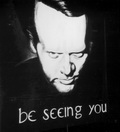
Garion - Prisonnier
- Messages: 18760
- Inscription: 19 Fév 2003, 10:15
- Localisation: Le village
Re: Topic Espace/Astronomie
https://www.lesechos.fr/industrie-services/air-defense/0600742488315-exclusif-spacex-accuse-arianespace-de-concurrence-deloyale-2246659.php
https://www.numerama.com/business/466083-spacex-veut-la-peau-darianespace-et-lance-une-attaque-sur-le-terrain-des-subventions.html
Hugues
https://www.numerama.com/business/466083-spacex-veut-la-peau-darianespace-et-lance-une-attaque-sur-le-terrain-des-subventions.html
Hugues

-

Hugues - Michel Desjoyeaux virtuel
- Messages: 12492
- Inscription: 26 Fév 2003, 06:14
Re: Topic Espace/Astronomie
Le premier trou noir "photographié":
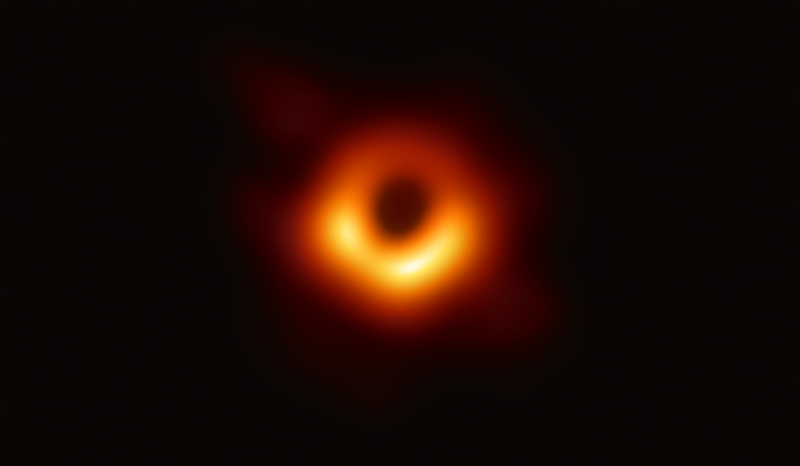
Cliquer pour l'image en haute qualité
Event Horizon Telescope Collaboration[/url]"]Scientists have obtained the first image of a black hole, using Event Horizon Telescope observations of the center of the galaxy M87. The image shows a bright ring formed as light bends in the intense gravity around a black hole that is 6.5 billion times more massive than the Sun. This long-sought image provides the strongest evidence to date for the existence of supermassive black holes and opens a new window onto the study of black holes, their event horizons, and gravity. Credit: Event Horizon Telescope Collaboration
Les cinq conférences de presse simultanées:
Europe:
Etats-Unis:
Chili:
Japon:
Taïwan:
https://www.facebook.com/sinicaedu/videos/1291969187618328/
L'original comporte non seulement divers liens à ce texte, mais en sus des liens vers 6 publications scientifiques relatives à ce projet et son objectif (certaines théorisant par exemple le traitement des données etc...).
Ainsi que des liens vers des images en plus haute résolution encore (et avec une compression nulle, notamment un TIFF de 180Mo).
https://eventhorizontelescope.org/
Hugues

Cliquer pour l'image en haute qualité
Event Horizon Telescope Collaboration[/url]"]Scientists have obtained the first image of a black hole, using Event Horizon Telescope observations of the center of the galaxy M87. The image shows a bright ring formed as light bends in the intense gravity around a black hole that is 6.5 billion times more massive than the Sun. This long-sought image provides the strongest evidence to date for the existence of supermassive black holes and opens a new window onto the study of black holes, their event horizons, and gravity. Credit: Event Horizon Telescope Collaboration
Les cinq conférences de presse simultanées:
Europe:
Etats-Unis:
Chili:
Japon:
Taïwan:
https://www.facebook.com/sinicaedu/videos/1291969187618328/
Event Horizon Telescope Collaboration a écrit:
Astronomers Capture First Image of a Black Hole
An international collaboration presents paradigm-shifting observations of the gargantuan black hole at the heart of distant galaxy Messier 87
The Event Horizon Telescope (EHT) — a planet-scale array of eight ground-based radio telescopes forged through international collaboration — was designed to capture images of a black hole. Today, in coordinated press conferences across the globe, EHT researchers reveal that they have succeeded, unveiling the first direct visual evidence of a supermassive black hole and its shadow.
This breakthrough was announced today in a series of six papers published in a special issue of The Astrophysical Journal Letters. The image reveals the black hole at the center of Messier 87 [1], a massive galaxy in the nearby Virgo galaxy cluster. This black hole resides 55 million light-years from Earth and has a mass 6.5 billion times that of the Sun [2].
The EHT links telescopes around the globe to form an Earth-sized virtual telescope with unprecedented sensitivity and resolution [3]. The EHT is the result of years of international collaboration, and offers scientists a new way to study the most extreme objects in the Universe predicted by Einstein’s general relativity during the centennial year of the historic experiment that first confirmed the theory [4].
"We have taken the first picture of a black hole," said EHT project director Sheperd S. Doeleman of the Center for Astrophysics | Harvard & Smithsonian. "This is an extraordinary scientific feat accomplished by a team of more than 200 researchers."
Black holes are extraordinary cosmic objects with enormous masses but extremely compact sizes. The presence of these objects affects their environment in extreme ways, warping spacetime and super-heating any surrounding material.
"If immersed in a bright region, like a disc of glowing gas, we expect a black hole to create a dark region similar to a shadow — something predicted by Einstein’s general relativity that we’ve never seen before, explained chair of the EHT Science Council Heino Falcke of Radboud University, the Netherlands. "This shadow, caused by the gravitational bending and capture of light by the event horizon, reveals a lot about the nature of these fascinating objects and allowed us to measure the enormous mass of M87’s black hole."
Multiple calibration and imaging methods have revealed a ring-like structure with a dark central region — the black hole’s shadow — that persisted over multiple independent EHT observations.
"Once we were sure we had imaged the shadow, we could compare our observations to extensive computer models that include the physics of warped space, superheated matter and strong magnetic fields. Many of the features of the observed image match our theoretical understanding surprisingly well," remarks Paul T.P. Ho, EHT Board member and Director of the East Asian Observatory [5]. "This makes us confident about the interpretation of our observations, including our estimation of the black hole’s mass."
Creating the EHT was a formidable challenge which required upgrading and connecting a worldwide network of eight pre-existing telescopes deployed at a variety of challenging high-altitude sites. These locations included volcanoes in Hawai`i and Mexico, mountains in Arizona and the Spanish Sierra Nevada, the Chilean Atacama Desert, and Antarctica.
The EHT observations use a technique called very-long-baseline interferometry (VLBI) which synchronises telescope facilities around the world and exploits the rotation of our planet to form one huge, Earth-size telescope observing at a wavelength of 1.3 mm. VLBI allows the EHT to achieve an angular resolution of 20 micro-arcseconds — enough to read a newspaper in New York from a sidewalk café in Paris [6].
The telescopes contributing to this result were ALMA, APEX, the IRAM 30-meter telescope, the James Clerk Maxwell Telescope, the Large Millimeter Telescope Alfonso Serrano, the Submillimeter Array, the Submillimeter Telescope, and the South Pole Telescope [7]. Petabytes of raw data from the telescopes were combined by highly specialised supercomputers hosted by the Max Planck Institute for Radio Astronomy and MIT Haystack Observatory.
The construction of the EHT and the observations announced today represent the culmination of decades of observational, technical, and theoretical work. This example of global teamwork required close collaboration by researchers from around the world. Thirteen partner institutions worked together to create the EHT, using both pre-existing infrastructure and support from a variety of agencies. Key funding was provided by the US National Science Foundation (NSF), the EU's European Research Council (ERC), and funding agencies in East Asia.
"We have achieved something presumed to be impossible just a generation ago," concluded Doeleman. "Breakthroughs in technology, connections between the world's best radio observatories, and innovative algorithms all came together to open an entirely new window on black holes and the event horizon."
Notes
[1] The shadow of a black hole is the closest we can come to an image of the black hole itself, a completely dark object from which light cannot escape. The black hole’s boundary — the event horizon from which the EHT takes its name — is around 2.5 times smaller than the shadow it casts and measures just under 40 billion km across.
[2] Supermassive black holes are relatively tiny astronomical objects — which has made them impossible to directly observe until now. As a black hole’s size is proportional to its mass, the more massive a black hole, the larger the shadow. Thanks to its enormous mass and relative proximity, M87’s black hole was predicted to be one of the largest viewable from Earth — making it a perfect target for the EHT.
[3] Although the telescopes are not physically connected, they are able to synchronize their recorded data with atomic clocks — hydrogen masers — which precisely time their observations. These observations were collected at a wavelength of 1.3 mm during a 2017 global campaign. Each telescope of the EHT produced enormous amounts of data — roughly 350 terabytes per day — which was stored on high-performance helium-filled hard drives. These data were flown to highly specialised supercomputers — known as correlators — at the Max Planck Institute for Radio Astronomy and MIT Haystack Observatory to be combined. They were then painstakingly converted into an image using novel computational tools developed by the collaboration.
[4] 100 years ago, two expeditions set out for the island of Príncipe off the coast of Africa and Sobra in Brazil to observe the 1919 solar eclipse, with the goal of testing general relativity by seeing if starlight would be bent around the limb of the sun, as predicted by Einstein. In an echo of those observations, the EHT has sent team members to some of the world's highest and isolated radio facilities to once again test our understanding of gravity.
[5] The East Asian Observatory (EAO) partner on the EHT project represents the participation of many regions in Asia, including China, Japan, Korea, Taiwan, Vietnam, Thailand, Malaysia, India and Indonesia.
[6] Future EHT observations will see substantially increased sensitivity with the participation of the IRAM NOEMA Observatory, the Greenland Telescope and the Kitt Peak Telescope.
[7] ALMA is a partnership of the European Southern Observatory (ESO; Europe, representing its member states), the U.S. National Science Foundation (NSF), and the National Institutes of Natural Sciences (NINS) of Japan, together with the National Research Council (Canada), the Ministry of Science and Technology (MOST; Taiwan), Academia Sinica Institute of Astronomy and Astrophysics (ASIAA; Taiwan), and Korea Astronomy and Space Science Institute (KASI; Republic of Korea), in cooperation with the Republic of Chile. APEX is operated by ESO, the 30-meter telescope is operated by IRAM (the IRAM Partner Organizations are MPG (Germany), CNRS (France) and IGN (Spain)), the James Clerk Maxwell Telescope is operated by the EAO, the Large Millimeter Telescope Alfonso Serrano is operated by INAOE and UMass, the Submillimeter Array is operated by SAO and ASIAA and the Submillimeter Telescope is operated by the Arizona Radio Observatory (ARO). The South Pole Telescope is operated by the University of Chicago with specialized EHT instrumentation provided by the University of Arizona.
L'original comporte non seulement divers liens à ce texte, mais en sus des liens vers 6 publications scientifiques relatives à ce projet et son objectif (certaines théorisant par exemple le traitement des données etc...).
Ainsi que des liens vers des images en plus haute résolution encore (et avec une compression nulle, notamment un TIFF de 180Mo).
https://eventhorizontelescope.org/
Hugues

-

Hugues - Michel Desjoyeaux virtuel
- Messages: 12492
- Inscription: 26 Fév 2003, 06:14
Re: Topic Espace/Astronomie
C'est un bel exploit de l'avoir fait.
Mais le rendu est pas très inattendu. Quelque part, tans mieux, on a pas trop mal compris à peu près comment ça marche et l'image qu'on risquait d'en avoir.
Mais le rendu est pas très inattendu. Quelque part, tans mieux, on a pas trop mal compris à peu près comment ça marche et l'image qu'on risquait d'en avoir.
Ouais_supère a écrit:Stef, t'es chiant
- Stéphane
- Le.
- Messages: 50710
- Inscription: 16 Déc 2004, 23:19
Re: Topic Espace/Astronomie
Sauron reprend forme ?
-

Nicklaus - Je vous emmerde et je rentre à ma maison
- Messages: 65850
- Inscription: 21 Fév 2003, 09:19
- Localisation: Trump Tower, Moscou, Fédération de Russie
Re: Topic Espace/Astronomie
rozz a écrit:ya quelques hemorroides quand meme en partie inférieure....
desolé, j´ai pas pu m´empecher, c´etait trop tentant.... et trop ressemblant.....
Mouai c'est qu'un trou noir... Et un trou noir c'est comme un trou du cul, tout le monde en a un.

-
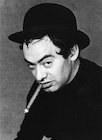
Feyd - Harkonnen
- Messages: 15476
- Inscription: 01 Sep 2005, 18:35
- Localisation: Giedi Prime
Re: Topic Espace/Astronomie
Stéphane a écrit:C'est un bel exploit de l'avoir fait.
Mais le rendu est pas très inattendu. Quelque part, tans mieux, on a pas trop mal compris à peu près comment ça marche et l'image qu'on risquait d'en avoir.
C'est quand même surprenant de voir un peu de lumière au centre.
Bon, d'un autre côté, c'est très flou...
Si j'avais souvent répété que je désirais mourir dans mon lit, ce que je voulais vraiment dire par là, c'est que je voulais me faire marcher dessus par un éléphant pendant que je ferais l'amour. Les Fusils d'Avalon, Roger Zelazny.
-

sheon - Léon Raoul
- Messages: 23761
- Inscription: 03 Juin 2010, 16:55
Re: Topic Espace/Astronomie
"c'est quoi le blues". Toujours les mêmes histoires, celles qui font vaciller les mondes et les empires.
John Lee Hooker
John Lee Hooker
- Shoemaker
- Messages: 22441
- Inscription: 24 Nov 2003, 12:11
- Localisation: Out of Africa
Re: Topic Espace/Astronomie

Si j'avais souvent répété que je désirais mourir dans mon lit, ce que je voulais vraiment dire par là, c'est que je voulais me faire marcher dessus par un éléphant pendant que je ferais l'amour. Les Fusils d'Avalon, Roger Zelazny.
-

sheon - Léon Raoul
- Messages: 23761
- Inscription: 03 Juin 2010, 16:55
Re: Topic Espace/Astronomie
C'est c'est le cerveau d'Homer Simpson qui fait ce travail de transformation.


-

Feyd - Harkonnen
- Messages: 15476
- Inscription: 01 Sep 2005, 18:35
- Localisation: Giedi Prime
Re: Topic Espace/Astronomie
Grand jour pour Israël. Bereshit devrait se poser sur la Lune.
Le petit état hébreu rentrerait dans le cercle très fermé des états ayant posé un engin lunaire.
Le petit état hébreu rentrerait dans le cercle très fermé des états ayant posé un engin lunaire.
-

Ghinzani - Messages: 29287
- Inscription: 12 Sep 2005, 18:38
Re: Topic Espace/Astronomie
Ghinzani a écrit:Grand jour pour Israël. Bereshit devrait se poser sur la Lune.
Le petit état hébreu rentrerait dans le cercle très fermé des états ayant posé un engin lunaire.
C est quoi ou qui Bereshit ?
-
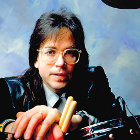
Porcaro56 - Messages: 2129
- Inscription: 15 Oct 2017, 16:38
- Localisation: france
Re: Topic Espace/Astronomie
Stéphane a écrit:C'était pas un projet privé ?
Le financement l’est , ce qui le rend encore plus admirable.
-

Ghinzani - Messages: 29287
- Inscription: 12 Sep 2005, 18:38
Re: Topic Espace/Astronomie
Porcaro56 a écrit:Ghinzani a écrit:Grand jour pour Israël. Bereshit devrait se poser sur la Lune.
Le petit état hébreu rentrerait dans le cercle très fermé des états ayant posé un engin lunaire.
C est quoi ou qui Bereshit ?
Littéralement « au commencement « ....
-

Ghinzani - Messages: 29287
- Inscription: 12 Sep 2005, 18:38
Re: Topic Espace/Astronomie
A l'occasion de la communication scientifique d'hier est remontée cette note d'un des blogs de Nature, qui répertorie toutes les représentations scientifiquement exactes des trous noirs..
http://blogs.nature.com/aviewfromthebridge/2017/03/28/imaging-black-holes/
On découvre que les français ont été à la pointe du domaine, et en premier le pionnier Jean-Pierre Luminet en 1979, qui dessina point par point à l'encre blanche (India ink) sur un papier noir Canson, chaque coefficient qu'avait retourné sur l'imprimante sa simulation qui tournait sur son déjà très antique IBM 7040 (la machine date de 1963) à carte perforée (motivé le gars).
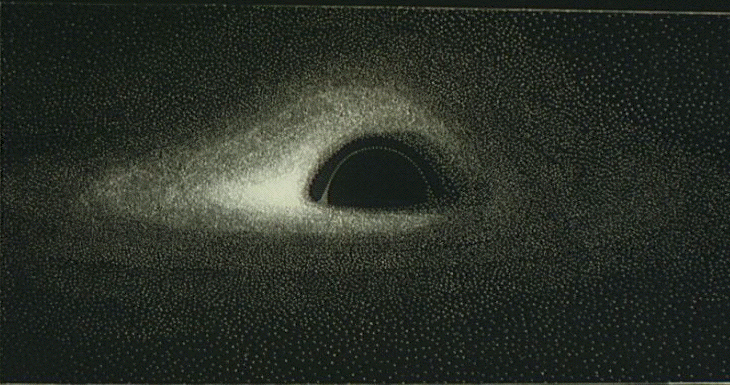
Suivi par Jean-Alain Marck:
Si est cité bien entendu le fameux médiatique Kip Thorne, et sa collaboration à Interstellar (dont la représentation est factuellement fausse, puisque l'asymétrie de luminosité qui était présente dès les travaux de Luminet, est absente, la production craignant que les gens trouvent ça bizarre), est surtout cité Andrew Hamilton qui a eu une importance en la matière presque aussi grande que les Français..
Andrew Hamilton qui est derrière la représentation de Voyage of Time: au fil de la vie (que vous pouvez voir actuellement en VOST sur Cine+ Club [pub!] ), lorsque le film atteint la fin du temps.
Comme en témoigne ce clip de vulgarisation scientifique lié au film:
"Black Holes"
Hugues
http://blogs.nature.com/aviewfromthebridge/2017/03/28/imaging-black-holes/
On découvre que les français ont été à la pointe du domaine, et en premier le pionnier Jean-Pierre Luminet en 1979, qui dessina point par point à l'encre blanche (India ink) sur un papier noir Canson, chaque coefficient qu'avait retourné sur l'imprimante sa simulation qui tournait sur son déjà très antique IBM 7040 (la machine date de 1963) à carte perforée (motivé le gars).

Suivi par Jean-Alain Marck:
Si est cité bien entendu le fameux médiatique Kip Thorne, et sa collaboration à Interstellar (dont la représentation est factuellement fausse, puisque l'asymétrie de luminosité qui était présente dès les travaux de Luminet, est absente, la production craignant que les gens trouvent ça bizarre), est surtout cité Andrew Hamilton qui a eu une importance en la matière presque aussi grande que les Français..
Andrew Hamilton qui est derrière la représentation de Voyage of Time: au fil de la vie (que vous pouvez voir actuellement en VOST sur Cine+ Club [pub!] ), lorsque le film atteint la fin du temps.
Comme en témoigne ce clip de vulgarisation scientifique lié au film:
"Black Holes"

Hugues

-

Hugues - Michel Desjoyeaux virtuel
- Messages: 12492
- Inscription: 26 Fév 2003, 06:14
Re: Topic Espace/Astronomie
Je pensais qu'ils allaient nous balancer d'abord l'image de notre trou noir a nous au centre de la voie lactée plutôt que celui de cette lointaine galaxie, certes plus gros mais beaucoup plus loin.
Il y a une date de prévu pour le notre ?
Il y a une date de prévu pour le notre ?

"I married the 12 cylinder engine and I never divorced it" Enzo Ferrari.
-

Alfa - imperator
- Messages: 12947
- Inscription: 26 Jan 2004, 11:38
- Localisation: De Gaulle
Re: Topic Espace/Astronomie
Alfa a écrit:Je pensais qu'ils allaient nous balancer d'abord l'image de notre trou noir a nous au centre de la voie lactée plutôt que celui de cette lointaine galaxie, certes plus gros mais beaucoup plus loin.
Il y a une date de prévu pour le notre ?
Non, mais on suppose que c'est dans un futur qui s'est déroulé il y a 2 milliards d'années. Serons-nous pas encore là ?
"c'est quoi le blues". Toujours les mêmes histoires, celles qui font vaciller les mondes et les empires.
John Lee Hooker
John Lee Hooker
- Shoemaker
- Messages: 22441
- Inscription: 24 Nov 2003, 12:11
- Localisation: Out of Africa
Re: Topic Espace/Astronomie
Shoemaker a écrit:Alfa a écrit:Je pensais qu'ils allaient nous balancer d'abord l'image de notre trou noir a nous au centre de la voie lactée plutôt que celui de cette lointaine galaxie, certes plus gros mais beaucoup plus loin.
Il y a une date de prévu pour le notre ?
Non, mais on suppose que c'est dans un futur qui s'est déroulé il y a 2 milliards d'années. Serons-nous pas encore là ?
Quoi ? qu'on verra notre trou noir?
Après recherche ils sont toujours en train de l'observer, il devrait donner une image en 2020 pour celui de la voie lactée.
A mon avis ça vient du fait qu'on est obligé de l'observer par la tranche de notre galaxie puisqu'il est au centre de celle-ci, et comme il y a beaucoup de matière qui gène, le travail doit être encore plus fastidieux.

"I married the 12 cylinder engine and I never divorced it" Enzo Ferrari.
-

Alfa - imperator
- Messages: 12947
- Inscription: 26 Jan 2004, 11:38
- Localisation: De Gaulle
Re: Topic Espace/Astronomie
Et niveau luminosité, c'est un peu plus bordélique aussi, probablement.
Si j'avais souvent répété que je désirais mourir dans mon lit, ce que je voulais vraiment dire par là, c'est que je voulais me faire marcher dessus par un éléphant pendant que je ferais l'amour. Les Fusils d'Avalon, Roger Zelazny.
-

sheon - Léon Raoul
- Messages: 23761
- Inscription: 03 Juin 2010, 16:55
Re: Topic Espace/Astronomie
Ca a toujours été plus facile de voir le trou de balle d'un autre que le sien. Je veux dire, avant les miroirs, tout ça.
Ouais_supère a écrit:Stef, t'es chiant
- Stéphane
- Le.
- Messages: 50710
- Inscription: 16 Déc 2004, 23:19
Re: Topic Espace/Astronomie
Stéphane a écrit:Ca a toujours été plus facile de voir le trou de balle d'un autre que le sien. Je veux dire, avant les miroirs, tout ça.
-

Ghinzani - Messages: 29287
- Inscription: 12 Sep 2005, 18:38
Re: Topic Espace/Astronomie
Stéphane a écrit:Ca a toujours été plus facile de voir le trou de balle d'un autre que le sien. Je veux dire, avant les miroirs, tout ça.
trou noir, trou de balle, miroir, toussa..... Kadoc ca te cause pas ce topic ????
- rozz
- Messages: 5104
- Inscription: 01 Déc 2010, 11:38
- Localisation: BZH
Re: Topic Espace/Astronomie
Ghinzani a écrit:Stéphane a écrit:Ca a toujours été plus facile de voir le trou de balle d'un autre que le sien. Je veux dire, avant les miroirs, tout ça.
quoi, c'est pas casher, c'est ça ?
Ouais_supère a écrit:Stef, t'es chiant
- Stéphane
- Le.
- Messages: 50710
- Inscription: 16 Déc 2004, 23:19
Re: Topic Espace/Astronomie
Stéphane a écrit:Ghinzani a écrit:Stéphane a écrit:Ca a toujours été plus facile de voir le trou de balle d'un autre que le sien. Je veux dire, avant les miroirs, tout ça.
quoi, c'est pas casher, c'est ça ?
Non c’est con .
-

Ghinzani - Messages: 29287
- Inscription: 12 Sep 2005, 18:38
Re: Topic Espace/Astronomie
Stéphane a écrit:Ca a toujours été plus facile de voir le trou de balle d'un autre que le sien. Je veux dire, avant les miroirs, tout ça.
C'est troublant, tout ça, parce que la personne qu'on connaît le mieux, avec qui on passe la totalité de sa vie, on ne verra jamais sa tronche en "vrai" (le trou de balle, c'est encore possible, pour les contorsionnistes
Ca aurait été sympa et logique, que le Bon Dieu (la Création, ou ce qu'on veut d'autre) nous dote d'yeux au bout de tentacules super mobiles...
"c'est quoi le blues". Toujours les mêmes histoires, celles qui font vaciller les mondes et les empires.
John Lee Hooker
John Lee Hooker
- Shoemaker
- Messages: 22441
- Inscription: 24 Nov 2003, 12:11
- Localisation: Out of Africa
Re: Topic Espace/Astronomie
Stéphane a écrit:Sans déconner ?

"I married the 12 cylinder engine and I never divorced it" Enzo Ferrari.
-

Alfa - imperator
- Messages: 12947
- Inscription: 26 Jan 2004, 11:38
- Localisation: De Gaulle
Re: Topic Espace/Astronomie
Shoemaker a écrit:Stéphane a écrit:Ca a toujours été plus facile de voir le trou de balle d'un autre que le sien. Je veux dire, avant les miroirs, tout ça.

C'est troublant, tout ça, parce que la personne qu'on connaît le mieux, avec qui on passe la totalité de sa vie, on ne verra jamais sa tronche en "vrai" (le trou de balle, c'est encore possible, pour les contorsionnistes)
Ca aurait été sympa et logique, que le Bon Dieu (la Création, ou ce qu'on veut d'autre) nous dote d'yeux au bout de tentacules super mobiles...
Si on avait des yeux au bout des tentacules on voudrait voir en face le bout de ces tentacules...
On appelle ça la tronche car il y a les yeux, le système respiratoire ou alimentaire on s'en tape en fait.
- Nono
- Messages: 2557
- Inscription: 18 Juin 2016, 14:12
Re: Topic Espace/Astronomie
Stéphane a écrit:Ca a toujours été plus facile de voir le trou de balle d'un autre que le sien. Je veux dire, avant les miroirs, tout ça.
-

bravonadir - Messages: 1012
- Inscription: 09 Mar 2015, 00:31
Re: Topic Espace/Astronomie
Nono a écrit:
Si on avait des yeux au bout des tentacules on voudrait voir en face le bout de ces tentacules...
Alors ne reste que la dernière solution radicale : la morphine (entre autre).
Dans le temps, alors que j'étais jeune et hospitalisé, on m'a fait une injection de morphine intramusculaire. Je ne souffrais même pas. Le médecin de garde, peut-être qu'il voulait se servir lui-même, m'a considéré comme un prétexte ? Allez savoir...
Bref, il entre dans ma chambre que je partageais avec un autre jeune, sympa. Il me fait la pikouze. Il s'installe, et commence à discuter avec nous. Quelques secondes après, je me mets à planer sévère ! Et me voilà-t-y pas transformé en corps astral, un truc dans le genre... Je me rappelle parfaitement, en train de me regarder : et mes yeux "virtuels" étaient au plafond, dans un coin de la chambre. Je regardais la scène, d'en haut, avec un réalisme absolu. Moi en train de dormir, le toubib en pleine discussion avec l'autre malade, tranquille...
Ca a duré une ou deux minutes, puis, dodo total.
Je me suis donc vu face à face, une fois, dans la vie !
"c'est quoi le blues". Toujours les mêmes histoires, celles qui font vaciller les mondes et les empires.
John Lee Hooker
John Lee Hooker
- Shoemaker
- Messages: 22441
- Inscription: 24 Nov 2003, 12:11
- Localisation: Out of Africa
Re: Topic Espace/Astronomie
Un peu comme quand on s'endort devant la télé et qu'on a l'impression de participer à ce qui s'y passer. Un début de rêve, quoi.
Ouais_supère a écrit:Stef, t'es chiant
- Stéphane
- Le.
- Messages: 50710
- Inscription: 16 Déc 2004, 23:19
Qui est en ligne
Utilisateurs parcourant ce forum: Bing [Bot], Majestic-12 [Bot] et 3 invités



